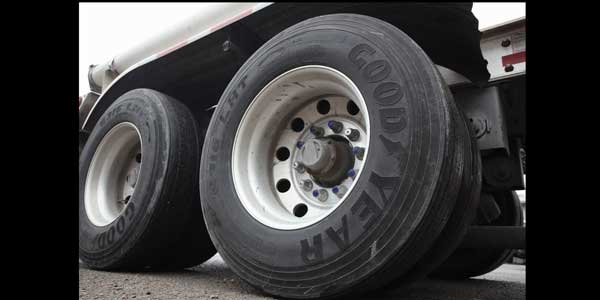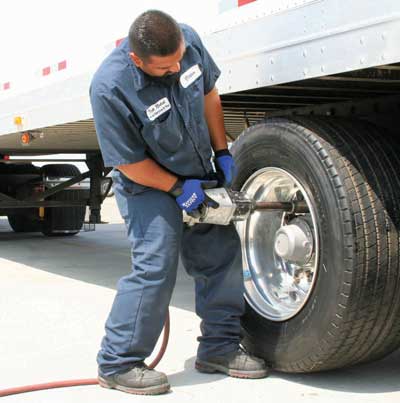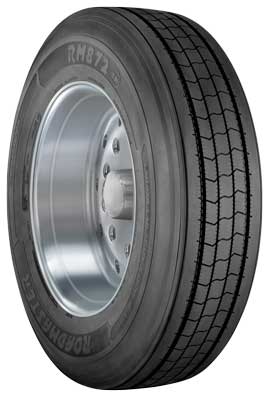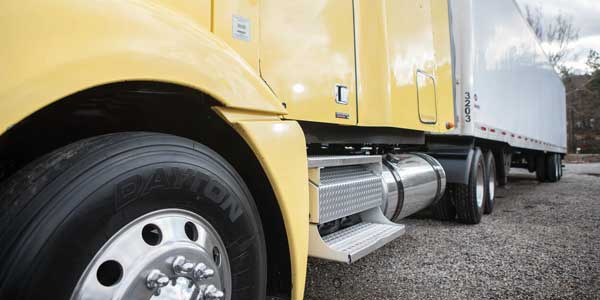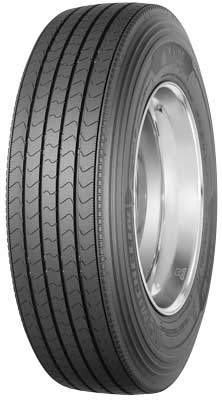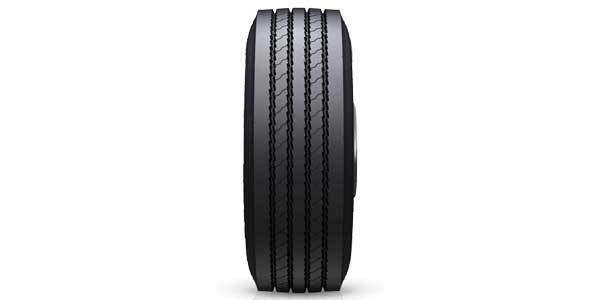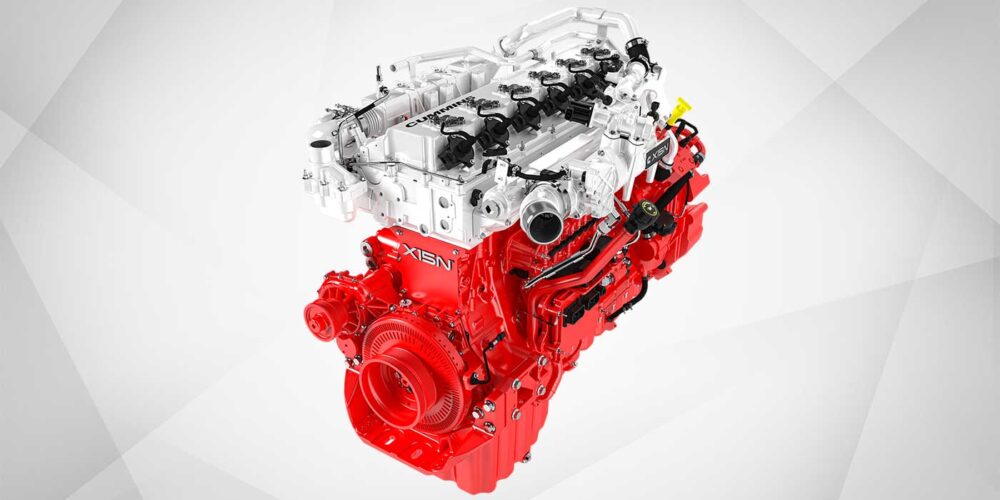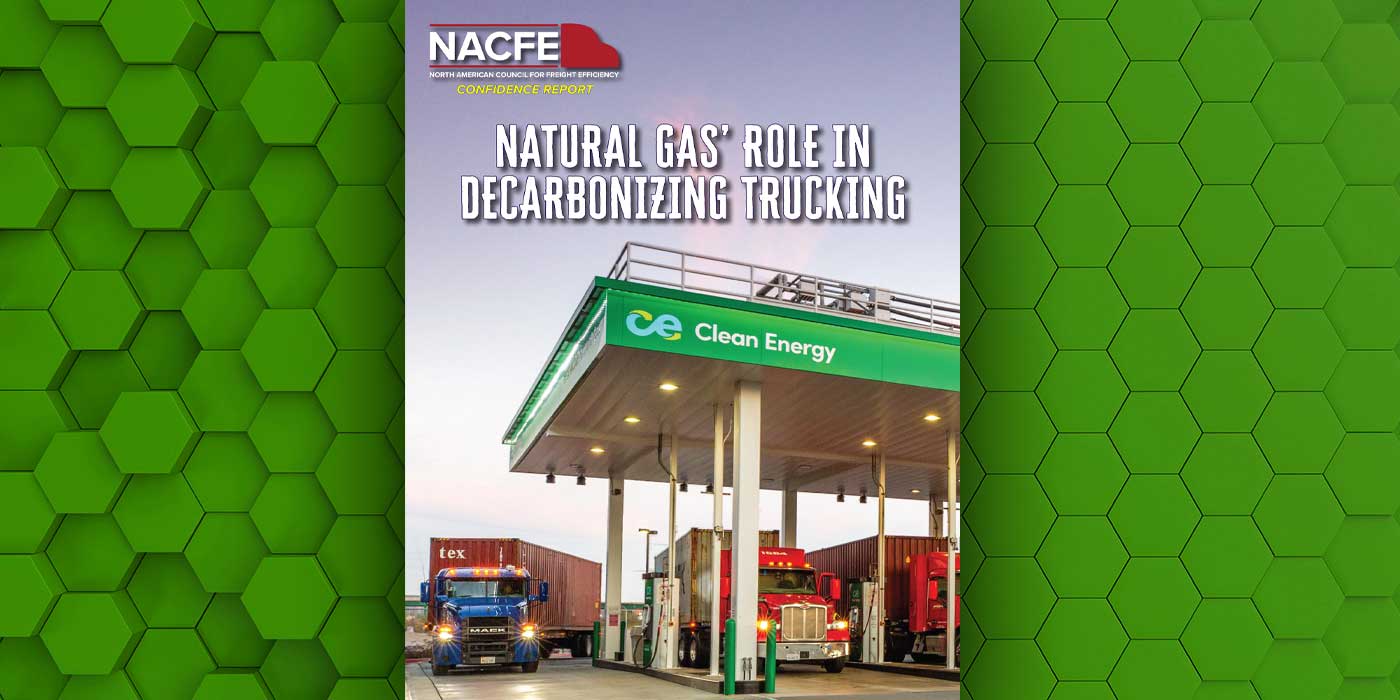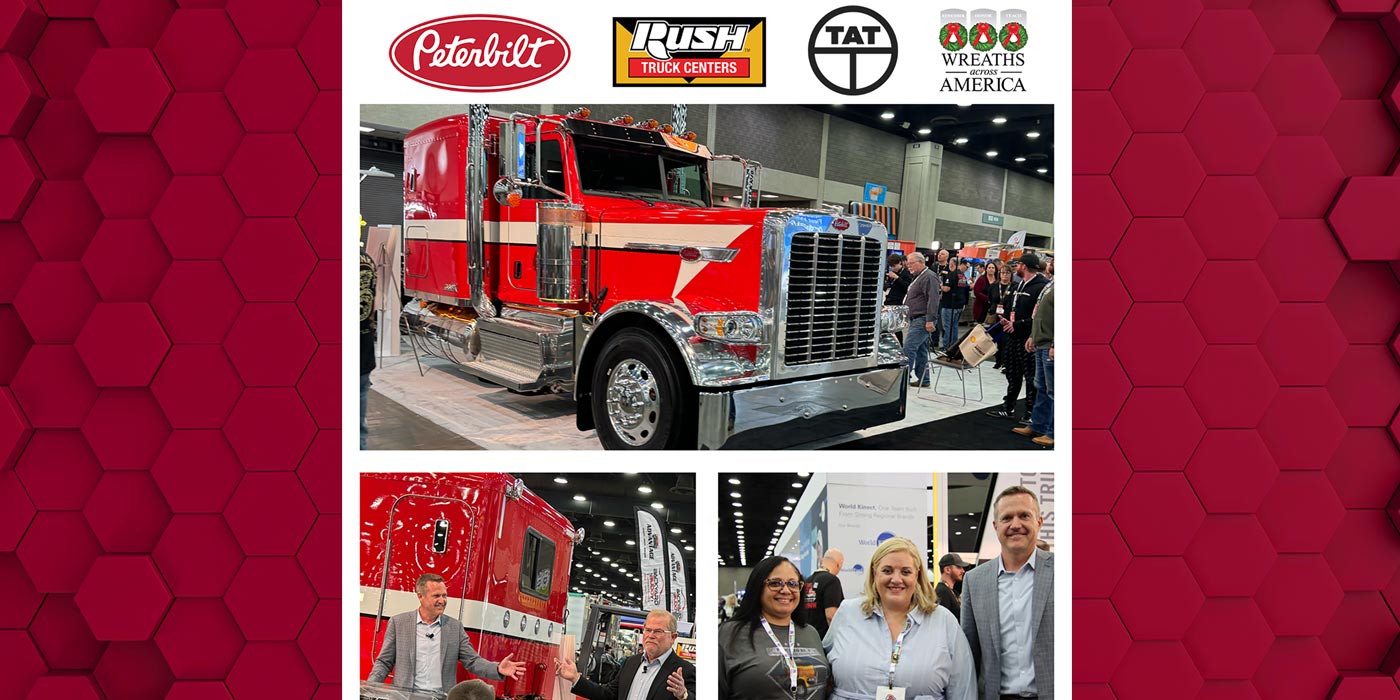For many years, tire manufacturers have been promoting the fuel-saving potential of their low rolling resistance products. Their claims, based on sound research, indicate that tire rolling resistance accounts for a significant percentage of fuel consumption.
Their case for adopting low rolling resistance tire technology becomes even stronger when you consider that, under the EPA SmartWay program, certified low rolling resistance tires have been determined to provide a measurable fuel savings. However, while the SmartWay data relates to using low rolling resistance steer, drive and trailer axle tires to lower fuel consumption, manufacturers are quick to note the large contribution that trailer tires in particular make to efficiency.
“For a typical 18-wheel commercial vehicle,” begins Matt Schnedler, senior product manager with Bridgestone Americas Tire Operations, “trailer tires represent 43% of the total contribution of tires to a truck’s fuel economy.”
Evan Perrow, senior product marketing manager at Goodyear Tire & Rubber Co., agrees: “Trailer tires are responsible for about 40% of tire-related drag on a standard tractor-trailer combination.”
According to the EPA’s Greenhouse Gas model, trailer tires account for approximately 42% of a vehicle’s tire rolling resistance contribution by axle, notes Sharon Cowart, director of product marketing at Michelin Truck Tires. “This makes it a prime wheel position for low rolling resistance tires,” she says.
Accurate results
“The best test of tire fuel efficiency is to put new, low rolling resistance tires on multiple trailers and run before-and-after analyses,” says Johnny Cape, Continental’s senior product manager for commercial vehicle tires in North America. “However, in real-world situations, unless a truck is married to its trailer and is not engaged in drop-and-load scenarios, it can be hard to get accurate results.
“Fleet managers should make sure they are comparing the same standard for all tires, to ensure an ‘apples to apples’ comparison,” Cape continues. “The most accurate available comparisons will come from lab tests, so to compare the efficiency of low rolling resistance trailer tires, manufacturers send their products to a qualified third-party laboratory.”
For Gary Schroeder, director of Cooper Tire’s truck and bus tire business, which includes the Roadmaster brand, a fleet can look at rolling resistance information provided by the tire manufacturer to compare the efficiency of tires. “To analyze the true cost of using low rolling resistance tires,” he says, “fleets need to look at the combined cost per mile for their tires and their fuel.”
When a tire design achieves lower rolling resistance, it can result in undesirable side effects if the tires are not carefully engineered, Schroeder explained. For example, when tire makers formulate tread compounds to achieve lower rolling resistance performance, the tires may wear faster or be more susceptible to cutting and tearing than tires designed with more traditional tread compounds.
“Historically, low rolling resistance tire tread compounds have tended to wear out faster and to be more susceptible to tread cutting and chipping than their standard counterparts,” Schroeder adds. “Another typical difference is that verified low rolling resistance tires tend to have shallower tread depths. The shallower tread depth provides less rolling resistance, but the disadvantage can be fewer overall miles to removal.”
Calculating fuel consumption
Jay Moon, general manager of TBR marketing for Hankook Tire America Corp., says that while each manufacturer tests tires for rolling resistance and lists the rolling resistance of every tire, in order to get the most accurate data, fleets need to hold a test by driving installed low rolling resistance tires. “All conditions must be the same,” he cautions, “such as route, speed, inflation and truck model year. Only then can fleets can use the test to calculate fuel consumption.
“The most important thing fleets need to consider is tire usage and position,” Moon adds. “To lower costs for fuel and tire purchasing, fleets need to consider not only fuel efficiency, but also performance factors such as durability, mileage and traction.”
Most manufacturers have calculators that can be used to compare major brands, notes Tom Clauer, Yokohama Tire Corp.’s manager of commercial and OTR product planning. “Those can give you a decent measurement, but when conducting internal testing of products, it is important to ensure similar operations, equipment and conditions,” he says. “Considerations such as climate, loaded percentage, road material composition and suspension systems can be significant variants in the final analysis.”
Clauer notes that mileage is the number-one trade-off when designing for lower rolling resistance. Other features to consider would be tread pattern and design.
“Another issue to consider is the product’s fuel efficiency as a whole,” Clauer adds. “Not all fuel efficient tires are created the same, especially if you retread. For example, where you are retreading a product in which the tread is fuel efficient and the casing is common, the resulting retread may not be as efficient as one that used a tread and casing designed for fuel efficiency.”
Maximizing benefits
Bridgestone’s Schnedler agrees that fleets must consider tread wear needs and traction requirements, as well as the application of their tires when making choices. “It is important to note that there are always tradeoffs, so there is no tire that can give you the maximum benefit in all categories,” he cautions.
“There are several factors that influence a tire’s rolling resistance, including the use of fuel-efficient compounds, tread pattern and sidewall design,” Schnedler continues. “Furthermore, the life of a tire depends heavily on casing design, which is responsible for approximately 50% to 65% of the overall rolling resistance of a tire. And a good casing design protects low rolling resistance trailer tires from tread heat, saving fuel and improving retreadability.”
Many factors affect rolling resistance, Michelin’s Cowart points out. “Through tire design, it is possible to utilize technologically advanced compounds and construction techniques to minimize a tire’s rolling resistance,” she says. “For example, tire designers use a host of technology bricks to improve rolling resistance such as rubber compounds or tread layers that maximize fuel efficiency and balance tread wear, scrub resistance, traction and durability.
“Trailer tires typically have ribbed tread designs that are lower in tread depth, which positively contributes to lower rolling resistance in this free rolling position,” Cowart explains further. “Tread compounds also play a large role in reducing rolling resistance and maximizing fuel efficiency. These tires have fuel-efficient compounds in the sidewall and bead area as well, and tire design engineers also optimize tire construction and contact patch footprint, which are contributing factors in rolling resistance.
“Overall, there needs to be a consideration of the operating environment and an understanding of how the tire can contribute to the success of the fleet,” Cowart continues. “The tire with the best cost per mile or cost of ownership will dictate what to select, and certainly rolling resistance and fuel economy are factors in the decision.”
By constantly developing technologies and adjusting materials and design elements in the areas of compounding, tread and tire construction to minimize performance trade-offs, today’s low rolling resistance trailer tires continue to evolve, offering fleets even more advance fuel saving choices.
Read more on trailers from Fleet Equipment‘s latest issue: from doors, lift gates and floors to lighting to electrical systems.

